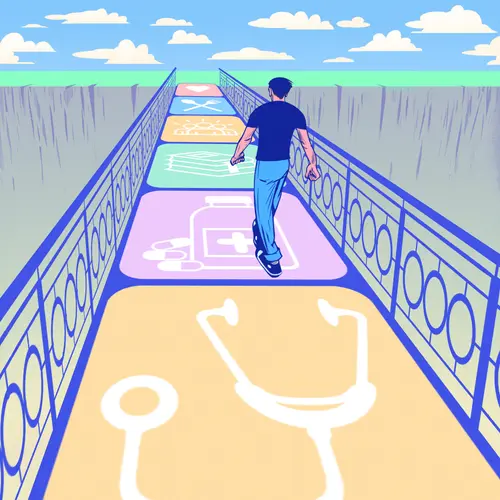What Is Testicular Torsion?
Testicular torsion is when a your testicle twists around. (The word torsion means “to twist.”) The motion also twists the spermatic cord that connects to the testicle. Inside this cord are vessels that carry blood to the testicle.
Torsion can slow or cut off blood flow to your testicle. A lack of blood makes the affected testicle swell and become painful.
Testicular torsion is a medical emergency. You need to be treated as soon as possible to prevent infertility and other complications, and to save the testicle.
Unilateral testicular torsion
Testicular torsion is usually unilateral. This means that only one of the testes is twisted.
Bilateral testicular torsion
When both testes become twisted, it's known as bilateral testicular torsion. Less than 2% of testicular torsion cases are bilateral, and most are in newborns.
Testicular Torsion Causes and Risk Factors
The two testes sit in a pouch that hangs below your penis. It’s called the scrotum. The spermatic cord connects the testicles to your body. Normally, the testicles are attached to the inside of your scrotum so they don't move around.
The main cause of testicular torsion is being born without the tissue that holds your testicles in place. Without this tissue, your testicles are free to move around inside the scrotum. This is called a bell clapper deformity. Newborns can get testicular torsion because the connecting tissue hasn't yet formed.
You're also more likely to have testicular torsion if you:
Testicular Torsion Symptoms
When blood flow is cut off, the pain from torsion is severe. The testicle becomes swollen, and it can die if not treated. Quick treatment can save your testicle from permanent damage. Symptoms to watch for include:
Testicular torsion pain level
Testicular torsion pain is usually sudden and intense. You will probably feel constant pain that does not go away. For some people, the pain comes and goes, but it won’t go away completely. You might also have severe pain in your lower abdomen or groin area. Testicular torsion can be so intense, you feel nauseated or struggle to walk. While rare, you could have less severe pain, along with symptoms like swelling in one or both testes.
Testicular Torsion Diagnosis
Your doctor will ask questions about your symptoms and give you a physical exam to check your scrotum and testicles.
He might gently touch the inside of your thigh on the side of the affected testicle. Normally, this should make your testicle contract, or rise up. If it doesn't, you could have testicular torsion.
You might get one or more of these tests to diagnose testicular torsion:
- Urine test (checks for an infection)
- An imaging test of your scrotum, usually an ultrasound that uses sound waves to check for reduced blood flow to your testicle
Your doctor might need to do surgery to find out if you have testicular torsion or something else.
Testicular Torsion Treatment
Sometimes, doctors can untwist the testicle and spermatic cord by hand. But in most cases, you'll need surgery, called orchiopexy, to fix testicular torsion.
You’ll be asleep and won’t feel pain during the surgery. The surgeon will make a small cut in your scrotum and untwist your spermatic cord. This is called surgical detorsion. Then they will attach your testicles to the inside of your scrotum to prevent them from twisting again.
Testicular Torsion Complications
You'll have the best odds of saving your testicle if you have surgery within 6 hours of the time the pain started. After 12 hours, the blocked blood flow can cause permanent damage. The testicle may need to be surgically removed. This surgery is called orchiectomy. It can also lower your fertility.
Testicular Torsion Prevention
The only way to prevent testicular torsion is to have surgery to attach your testicles to the insides of your scrotum, but this is only done if you have already had torsion or are currently having it. This is not done as a preventive measure.
Takeaways
Testicular torsion is when a testicle twists out of place. This can cut off blood flow to the testicle, causing intense pain and swelling. It's a medical emergency that should be treated fast to prevent fertility problems and save the testicle.
Testicular Torsion FAQs
Can testicular torsion fix itself?
Testicular torsion usually can't fix itself. You'll need to see a doctor who can untwist the testicle by hand or during surgery. Sometimes, the spermatic cord untwists itself, but it's likely to twist again. Even if the pain goes away, you should see a doctor.
How does a doctor check for testicular torsion?
To check for testicular torsion, a doctor will examine your testicles, scrotum, groin, and abdomen. The doctor might rub or pinch the inside of your thigh to test your reflexes – if your testicle doesn't contract, you probably have testicular torsion.
How do I untwist testicular torsion at home?
Don’t try to untwist testicular torsion at home. A doctor or emergency room provider may be able to untwist the testicle by hand, but you’ll still probably need surgery.

